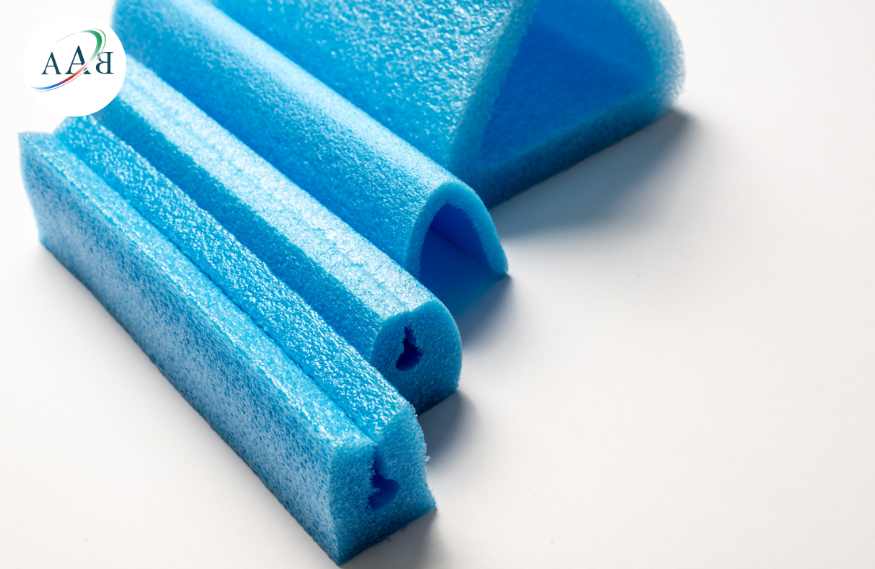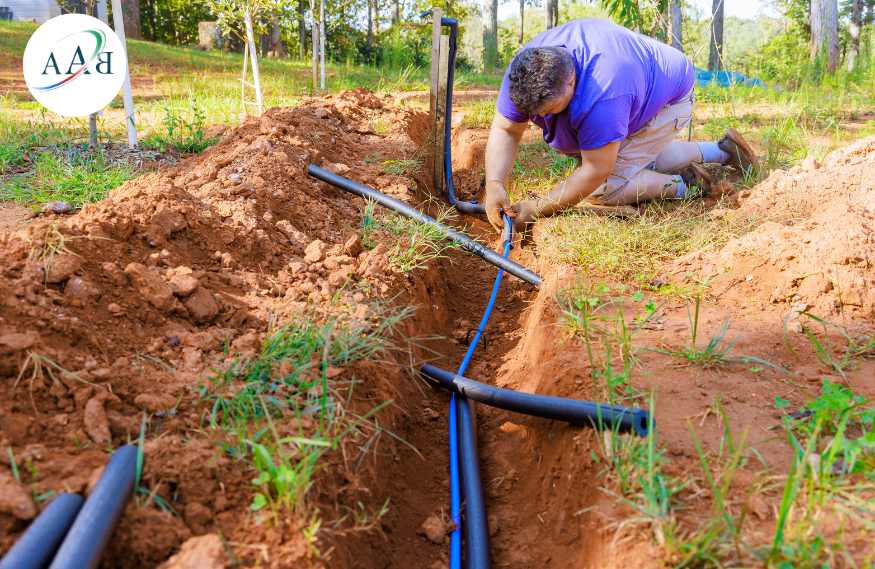Polyethylene insulation is flexible. Polyethylene, apart from insulation, has a wide variety of applications in various industries, including dampers and vibration and shock absorbers, packaging, and all kinds of sleeping and sports mats. Among the simplest and cheapest petroleum and polymer products, we can mention polyethylene, which is denoted by PE symbol. Polyethylene insulation is light and soft and easy to carry and install, for this reason these insulations are widely used in different places. An example of these insulations is polyethylene pipe insulation used for polyethylene pipes.
What is polyethylene insulation?
Polyethylene insulation is a flexible closed-cell type and is divided into two types (EPE (Expanded Polyethylene) and XLPE (Cross-linked Polyethylene). Polyethylenes are multi-purpose plastic foams that are very important and convenient for construction works and many applications. Others are very influential.
In addition to having a very good thermal resistance coefficient, polyethylene insulations also have a very good resistance to moisture penetration. So that the maximum value of water permeability in EPE is equal to 0.05 per inch and in XLPE it is almost zero. Polyethylene insulation is available in the market in various sizes (different internal diameters) as well as with and without jacketing and external coatings.
These types of insulators are very suitable for piping insulation and domestic heating and ventilation systems and in places where the working temperature is usually below 900 degrees Celsius. The chemical formula of polyethylene insulation is such that their fire transmission coefficient is less than 25 and their smoke transmission coefficient is less than 50, and in case of fire, they do not emit any toxic vapors. These materials are usually used without the need for water vapor insulating jacketing, but for external applications (in the open air) special jacketing for climatic conditions should be used.
Advantages of polyethylene insulation:
- Easy and fast installation, so that installation time and cost will be significantly saved
- Moisture penetration coefficient is almost zero
- Ideal for humid environments and sub-zero temperatures
- Resistant to fungal and biological contamination
- High stability
- Resistant to ozone and ultraviolet
- Corrosion resistant
- Very low heat transfer coefficient
- No fibers and no fine dust production
- flexible
- non-toxic
- Resistant to pressure and impact
- Lower cost than elastomeric insulators (especially XLPE types with aluminum coating are much cheaper than elastomeric types with similar coatings)
Disadvantages of polyethylene insulation:
- Compared to insulations such as stone wool and glass wool, they have a higher cost
- Usually, the sound transmission coefficient of flexible cellular materials is higher than rock wool and glass wool (they are not acoustic insulation), because their density and rigidity are higher than mineral wool and glass wool.
- Polyethylene foams are thermoplastic. This means that if the temperature rises above the permissible temperature range, they will permanently deform and collapse (unlike thermoset materials such as elastomers). Therefore, these types of insulation are not very stable against thermal shocks.
Application of polyethylene insulation
Polyethylene foam, due to its closed cell properties, is used in sound insulation in buildings, amphitheatres, cinema halls, and water pipes, where the sound of water pouring into the pipes is annoying for other floors, and in all places where sound transmission should be prevented. is used
Polyethylene foam is also widely used in thermal insulation. For this purpose, foams with a diameter of 20 mm to 40 mm are used. In addition to being used as a sound return reducer in the environment, polyethylene foams also reduce the leakage of sound from one environment to another. The use of polyethylene foams, along with rebound foam and glass wool, increases the efficiency of insulation. Of course, it should be noted that polyethylene foam comes in sheets and tubes and in different types, which have different uses depending on their type. In the following, we mention some common uses of this type of insulation:
- Flexible cold thermal insulation
- Soundproof
- Suitable for refrigeration and HVAC systems and air ducts
- Suitable for cryogenic systems
- Suitable for engine houses and urban heating systems
- In addition to insulation purposes, polyethylene is also used in other fields such as shock absorbers, sports mats, packaging, plastic containers, adhesive tape, plastic pipes and hoses, etc.
Polyethylene pipe insulation
The use of polyethylene pipe insulation in polyethylene pipes leads to better performance and longer life of the pipe. It is necessary to use polyethylene pipe insulation to protect pipes from environmental factors such as sunlight, as well as to increase their lifespan and to prevent premature wear, corrosion, or rusting of pipes. Also, the use of insulation in pipes prevents heat transfer between the pipe and the environment.
Polyethylene pipe insulation prevents the penetration of moisture into the pipes, and even in polyethylene pipes that are used for sewage, it causes the sounds that occur when The flow of sewage will be reduced. If the pipe also leaks and you have used polyethylene pipe insulation, the possibility of leakage will decrease. In all the applications that polyethylene pipe insulation has, these insulators are made of polyethylene coating materials, which are produced and supplied in various colors and shapes.
Polyethylene pipe insulation specifications
These insulators are translucent and waxy and very light and flexible.
The insulation of polyethylene pipes is made of polyethylene itself and consists of different layers.
In general, these insulations are in two types (EPE (Expanded Polyethylene) and XLPE (Cross-linked Polyethylene).
The coefficient of fire transmission in polyethylene pipe insulation is less than 25 and the coefficient of smoke transmission is less than 50.
If these insulators catch fire, they do not produce any toxic fumes.
Usually, there is no need for water vapor insulation jacketing, but it is recommended to use water vapor insulation jacketing specific to that climate in open environments.
The innermost layer is made of porous polyethylene foam with a very light weight, and the outermost layer is made of polyethylene, which covers the insulation.
These insulators can be easily installed and used.
Available in a variety of models, choose your suitable insulation according to the intended application, pipeline connections, pipeline length.
These insulators reduce the noise of the fluid passing through the polyethylene pipes and prevent freezing of the cold water pipes.
Grades of plastic raw materials for pipe insulation
Different grades of plastic raw materials are used for pipe insulation, which are:
- EX3 grade heavy duty polyethylene
- LLD209 grade linear light polyethylene
- EX5 grade heavy duty polyethylene
- HDPE CRP100 grade heavy polyethylene
Access to product pages:
Poly aluminium chloride suppliers



